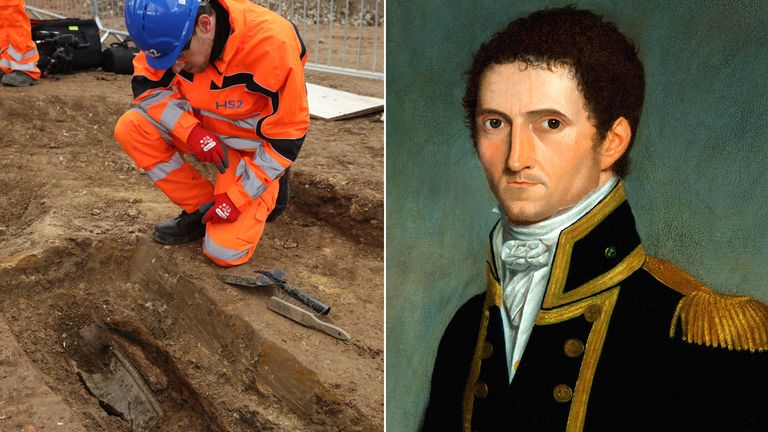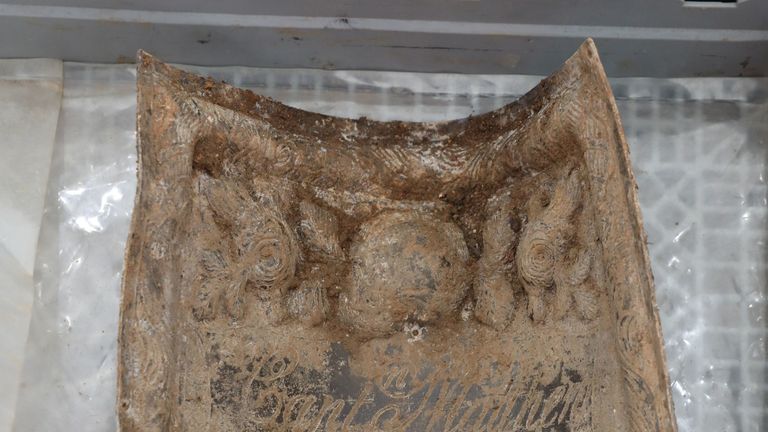Remains of famed naval explorer Matthew Flinders found by HS2 excavators
Captain Matthew Flinders was buried in London in 1814 but his remains were thought to have been lost as London expanded.
Friday 25 January 2019 09:23, UK
The remains of a famed Royal Navy explorer have been found by archaeologists at a burial site in Euston, London.
Matthew Flinders circumnavigated Australia more than two centuries ago but his final resting place was built over as London expanded in the 1840s.
Now he and 40,000 others resting in the burial ground are being removed and reburied to make way for a new High Speed 2 rail station.
Archaeologists had not been confident that they would find Captain Flinders at the site because, after he was buried the expansion of Euston station saw his headstone removed and grave covered.
It was thought by some that he was buried under what had become platform 15 but when he was found, this proved not to be the case.
Captain Flinders was most famous as commander of the HMS Investigator, which he used to navigate the Australian coast, the first British person to do so.
He was famously accompanied by his cat Trim and both are remembered in a statue at Euston station.
An indigenous sailor named Bungaree is also believed to have played a crucial role in the success of the voyages, which took place between 1801 and 1803.
Captain Flinders is credited with naming the continent and his name is used in some of its best-known landmarks, such as Flinders Station in Melbourne and Flinders Ranges in South Australia.
Flinders died at the age of 40, the day after the book detailing his journey, A Voyage to Terra Australis, was published.
He was buried on 23 July 1814 and his remains have been identified more than two centuries later using the lead depositum plate, or breast plate, that was placed on his coffin.
Helen Wass, HS2 head of heritage, said the discovery was "an incredible opportunity" to learn more about his achievements.
She added: "Captain Matthew Flinders put Australia on the map due to his tenacity and expertise as a navigator and explorer.
"Given the number of human remains at St James's, we weren't confident that we were going to find him.
"We were very lucky that Captain Flinders had a breastplate made of lead, meaning it would not have corroded.
"We'll now be able to study his skeleton to see whether life at sea left its mark and what more we can learn about him."
The explorer's remains will be reburied but the location has not yet been announced.




